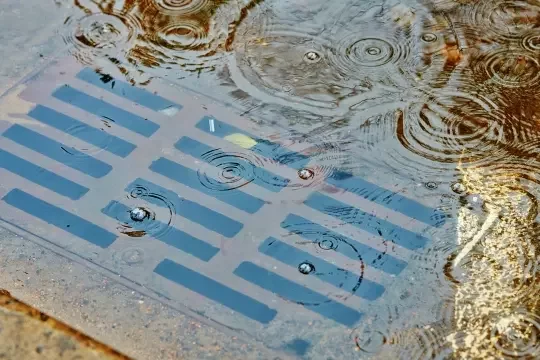Many issues with drains are a cause to call professionals, due to the niche skillset needed in order to deal with their inner workings and structure. So, it can be frustrating to know there’s a problem with your drains but not know what that problem is (as you can't typically see them), or how to deal with it.
But drainage systems have a way of leaving clues when something’s not quite right. There are small, subtle hints initially, which if left unchecked, can turn into costly disruptions. Being able to recognise these early indicators can make the difference between a quick fix and a major excavation. So, what are the signs?

What is a Ruptured Drain?
A collapsed drain occurs when a pipe becomes structurally weakened; it may crack, deform, or even completely cave in. This kind of failure is often the result of long-term wear and tear, pressure from heavy loads (like large vehicles), ground movement, or even poor installation in older systems.
When a drain collapses, wastewater and sewage no longer flow freely, which can create blockages, leaks, backups, and potentially dangerous conditions in and around your home or business.
What is the most obvious sign of a ruptured drain? Generally, you'd be able to smell if something wasn't right with your drains before the water stopped running
At Grey-Water Drainage Solutions, we attend to emergency callouts for broken-down drain systems. If you smell something out of the ordinary coming from your drains, don’t leave it to chance! Get in touch with us right away and we can alleviate your worries.
What are the Signs of a Caved-In Drain?
When a drain caves in, it doesn’t always announce itself right away, but there are generally signs. If you notice any of the following, this will be an indication to investigate further.

What Causes Drains to Collapse?
There are many factors that can contribute to the failure of a drain pipe, including ageing infrastructure made from old clay or pitch fibre, which are known to crack over time; natural shifts in soil or nearby construction that can cause stress on pipes, causing them to break; tree root intrusion caused by smaller cracks that expose trees to the moisture they inherently seek out; surface pressure from heavy vehicles, machinery, or poor surface water management; and the improper installation of pipes due to poor gradients, weak joints, or cheap materials.
How are Collapsed Drains Repaired?
Professional diagnosis is the first step. Grey-Water experts would typically use our CCTV survey system to ascertain the problem; this involves remote camera equipment to inspect the condition of your pipework and determine the best method for drainage system repairs.
Common repair options can include:
- Pipe relining, a non-invasive method where a resin liner is inserted and cured inside the damaged pipe, creating a new pipe within the old one. Drain relining costs will tend to be much less than excavating.
- Pipe bursting, which involves breaking apart the old pipe so a new one can be pulled through to take its place. This is less invasive than a full excavation, though not suitable for every case.
What are the Health Risks of Damaged Drains?
A caved-in drain is an emergency that risks not only costly repairs, but your health and that of those in the vicinity, contributing to weakened immune systems and the spread of diseases like e-coli, infections affecting the gastrointestinal area of the body, and throat, eye, and skin problems; it could contribute to environmental degradation and weaken the foundations of a building, attract pests, and halt the flow of clean water on your premises for a prolonged period of time.

Need help with a suspected drain cave-in? Whether you’ve spotted the signs early, or your dealing with an obvious drainage issue, professional help is essential. At Grey-Water, we specialise in effective diagnosis and long-lasting repairs to get your drain system back on track before minor symptoms become major problems.

